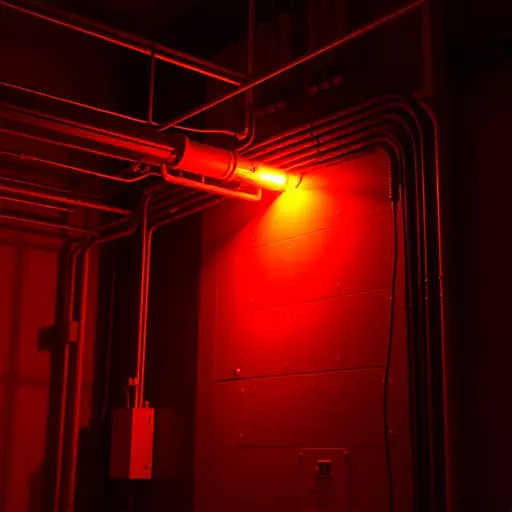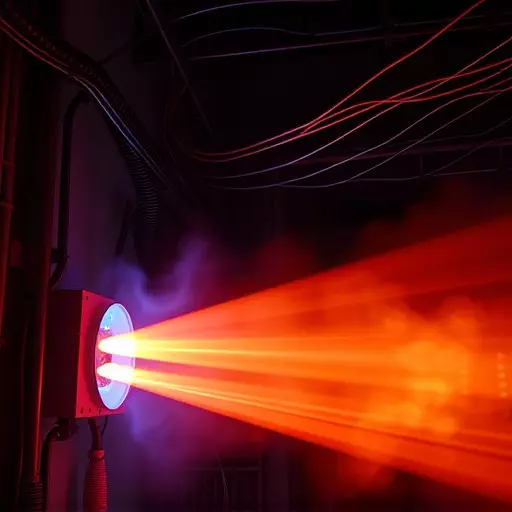The arc flash study process is a meticulous electrical hazard analysis that identifies and mitigates risks within facilities, adhering to arc flash safety standards. By examining equipment, wiring, and system configurations, it pinpoints potential arc flash hazards. The study recommends control measures, including upgrades, protective devices, and personal protective equipment (PPE), to ensure compliance with safety regulations, minimize risks, and promote a safer workplace.
In today’s industrial landscape, ensuring worker safety from electrical hazards is paramount. Facility-wide arc flash evaluations are crucial for identifying risks and vulnerabilities inherent in electrical systems. This comprehensive guide delves into the arc flash study process, highlighting critical methodology for accurate assessments. We explore essential electrical hazard analysis techniques to uncover potential arc flash dangers. Additionally, we examine arc flash safety standards to ensure compliance and protect workers from catastrophic events.
- Arc Flash Study Process: Unraveling the Methodology
- Electrical Hazard Analysis: Identifying Risks and Vulnerabilities
- Arc Flash Safety Standards: Ensuring Compliance and Protecting Workers
Arc Flash Study Process: Unraveling the Methodology
The arc flash study process is a systematic approach to identifying and mitigating electrical hazards within a facility. It begins with a thorough electrical hazard analysis, examining equipment, wiring, and system configurations to pinpoint potential arc flash risks. This involves assessing factors like voltage, current, and fault conditions that could trigger arcing events.
Using established arc flash safety standards as a guide, the study analyzes the consequences of an arc flash event, including potential injuries and property damage. It then recommends appropriate control measures, such as equipment upgrades, protective devices, and personal protective equipment (PPE), to ensure compliance with safety regulations and minimize risks to personnel and assets.
Electrical Hazard Analysis: Identifying Risks and Vulnerabilities
Arc flash studies are a critical component of any facility-wide electrical safety program. The arc flash study process involves a thorough electrical hazard analysis that identifies risks and vulnerabilities associated with electrical systems. This analysis considers various factors such as equipment ratings, design, age, and maintenance history to determine potential hazards and the severity of resulting arcs. By conducting this detailed evaluation, facilities can implement appropriate arc flash safety standards to protect workers from severe burns and other injuries.
The outcome of an arc flash study provides essential data for designing personal protective equipment (PPE) programs, developing safe work practices, and ensuring compliance with relevant regulations. It helps in pinpointing areas where improvements are needed, such as upgrading outdated equipment or implementing new safety measures. This proactive approach to electrical hazard analysis is crucial in minimizing the risks associated with arc flashes and fostering a safer working environment.
Arc Flash Safety Standards: Ensuring Compliance and Protecting Workers
Arc Flash Safety Standards play a pivotal role in ensuring worker protection and compliance within industrial facilities. Conducting a comprehensive arc flash study process involves a detailed electrical hazard analysis to identify potential risks associated with high-energy electrical systems. This meticulous evaluation includes assessing equipment, circuits, and components to determine flash protection boundaries (FPB) and proper personal protective equipment (PPE) requirements.
Adherence to arc flash safety standards is not just a regulatory mandate but also a critical measure to safeguard personnel from severe burns and other hazards during electrical maintenance or unexpected events. By implementing the findings of the arc flash study process, facilities can mitigate risks, enhance safety protocols, and foster a culture of proactive workplace safety.


